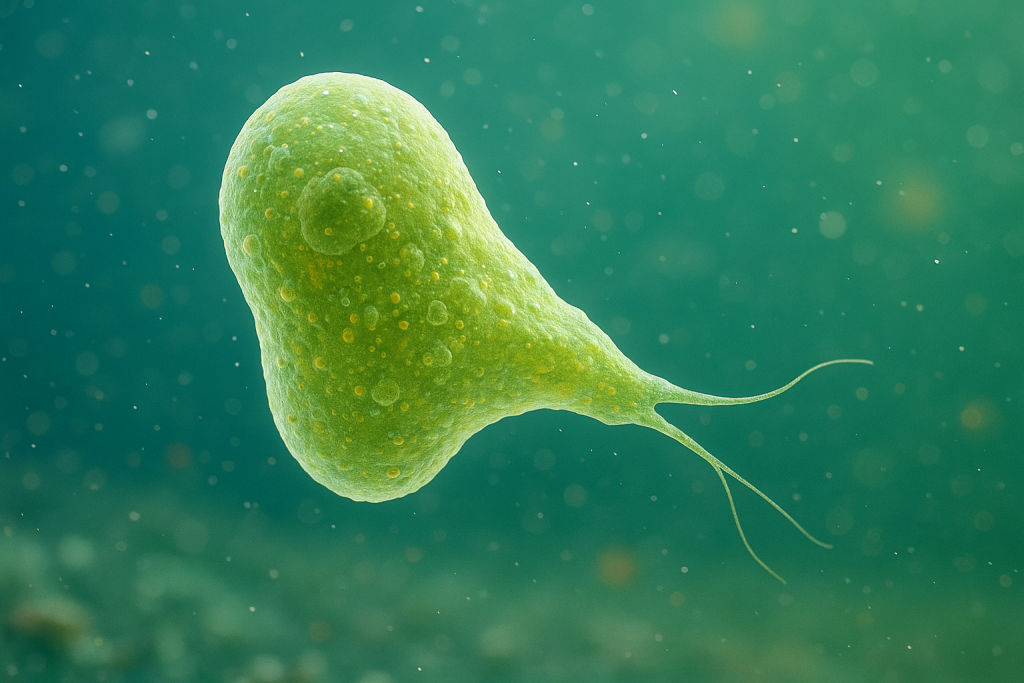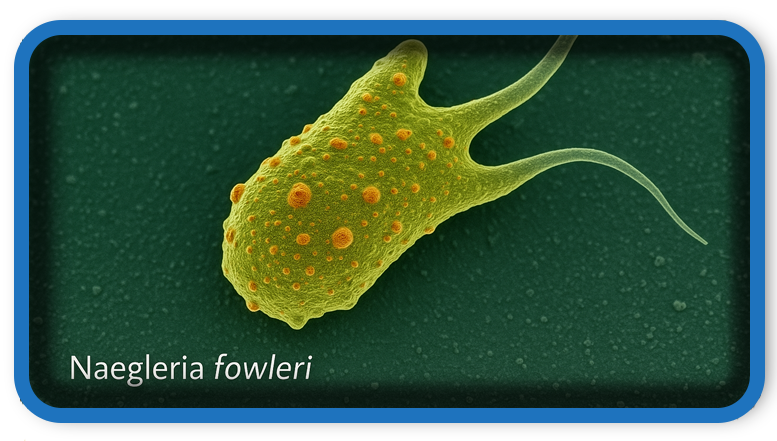⏲️ Estimated reading time: 5 min
12-Year-Old Dies from Brain-Eating Amoeba. A heartbreaking tragedy occurred in the U.S. as a 12-year-old boy died after being infected by a rare and deadly brain-eating amoeba Naegleria fowleri following a swim in a freshwater lake. Health officials have launched an immediate investigation.
Tragedy in the U.S.: 12-Year-Old Dies from Brain-Eating Amoeba After Lake Swim
A tragic event has shaken a Texas community after a 12-year-old boy died from a rare and deadly brain infection caused by Naegleria fowleri, a single-celled organism more ominously known as the “brain-eating amoeba.” The child contracted the infection after swimming in a local freshwater lake, and his condition deteriorated rapidly in the days following.

What Is Naegleria fowleri?
Naegleria fowleri is a microscopic amoeba commonly found in warm freshwater environments such as lakes, rivers, and hot springs. Though harmless when ingested, it becomes lethal when water containing the amoeba enters the body through the nose, allowing it to travel to the brain.
Once inside, it causes a swift and destructive infection called Primary Amoebic Meningoencephalitis (PAM), which inflames and destroys brain tissue at an alarming pace.
Symptoms and Rapid Progression
The symptoms of PAM typically appear 1 to 9 days after exposure and closely resemble those of bacterial meningitis. They include:
- High fever
- Severe headache
- Nausea and vomiting
- Stiff neck
- Seizures
- Confusion or behavioral changes
- Coma
Once symptoms begin, the disease progresses rapidly. According to the U.S. Centers for Disease Control and Prevention (CDC), PAM is nearly always fatal with only four known survivors out of 157 reported U.S. cases from 1962 to 2022.
How the Tragedy Unfolded
The young victim reportedly went swimming in a warm lake in southern Texas during a hot July day. Just two days later, he began experiencing flu-like symptoms. His parents initially believed it was a common illness, but his condition worsened alarmingly fast.
Doctors quickly identified the rare infection, and aggressive treatment was initiated including experimental antifungal drugs and induced hypothermia to reduce brain inflammation. Despite the efforts, the boy passed away within five days of symptom onset.
Public Health Alert and Water Safety
In response, local health authorities closed the lake and issued a public health advisory. Testing is underway to confirm the presence of the amoeba, and warning signs are being placed to inform future visitors of potential risks.
Educational campaigns have also begun in nearby communities to raise awareness about Naegleria fowleri and the precautions swimmers should take.
How to Protect Yourself from Naegleria fowleri
Though rare, infection with this amoeba is nearly always fatal, so prevention is crucial. Recommended precautions include:
- Avoid swimming in warm, still freshwater during hot weather.
- Don’t let water enter your nose use nose clips or keep your head above water.
- Refrain from stirring up sediment at the bottom of lakes or rivers.
- Only use sterile or distilled water for nasal rinses or neti pots.
- Heed warning signs and local health advisories at recreational water sites.
A Growing Threat in a Warming Climate
Scientists are increasingly concerned about how climate change could contribute to the spread of Naegleria fowleri. Rising global temperatures mean warmer freshwater environments for longer periods conditions ideal for the amoeba’s growth.
Previously isolated to southern U.S. states like Texas, Louisiana, and Florida, cases have now been reported in northern states such as Minnesota highlighting the need for national awareness.

Community Mourning and Demand for Action
The local community has rallied around the grieving family, hosting vigils and raising funds to support them through this devastating loss. Parents and residents are also urging local governments to implement stronger safety protocols, including:
- Mandatory warning signs at lakes
- Annual testing of popular swimming spots
- Clearer public education on rare waterborne threats
Rare, But Not Impossible
While infection is extremely rare, this tragedy serves as a reminder that deadly pathogens can sometimes lurk in nature’s most serene environments. Raising awareness and taking basic precautions could save lives.
The boy’s story underscores the fragility of life and the importance of vigilance even in activities as simple and joyous as swimming on a summer day.
The Numbers Behind the Amoeba (U.S. Data)
- Total known cases (1962–2022): 157
- Survivors: 4
- Mortality rate: ~97%
- High-risk periods: Summer, warm stagnant waters
- Primary affected states: Texas, Florida, Louisiana, now expanding northward
🧠 Raising Awareness Saves Lives
This heartbreaking event should act as a call to action not just for individuals, but for public health officials, water park managers, and municipalities. Increased investment in research, early diagnosis tools, and community education is vital.
Funeral Arrangements and Legacy
The child’s funeral is scheduled for the upcoming weekend. Hundreds are expected to attend, including classmates, family friends, and residents of the surrounding counties. His story will remain a powerful testament to the urgency of proactive water safety education.
🔔 For more tutorials like this, consider subscribing to our blog.
📩 Do you have questions or suggestions? Leave a comment or contact us!
🏷️ Tags: Naegleria fowleri, brain-eating amoeba, child dies swimming, freshwater lake risk, primary amoebic meningoencephalitis, summer swimming safety, Texas tragedy, waterborne infection, climate health risks, rare diseases
📢 Hashtags: #BrainEatingAmoeba, #NaegleriaFowleri, #WaterSafety, #PAM, #TexasNews, #ClimateRisks, #SummerSwimming, #PublicHealth, #ChildHealth, #FreshwaterDangers
🌊 Final Reflection
This devastating loss reminds us of the invisible threats in our environment and the importance of education and precaution. Sharing this story is more than awareness it’s a way to potentially save lives. Let’s stay safe, stay informed, and protect one another.
Only logged-in users can submit reports.
Discover more from HelpZone
Subscribe to get the latest posts sent to your email.

